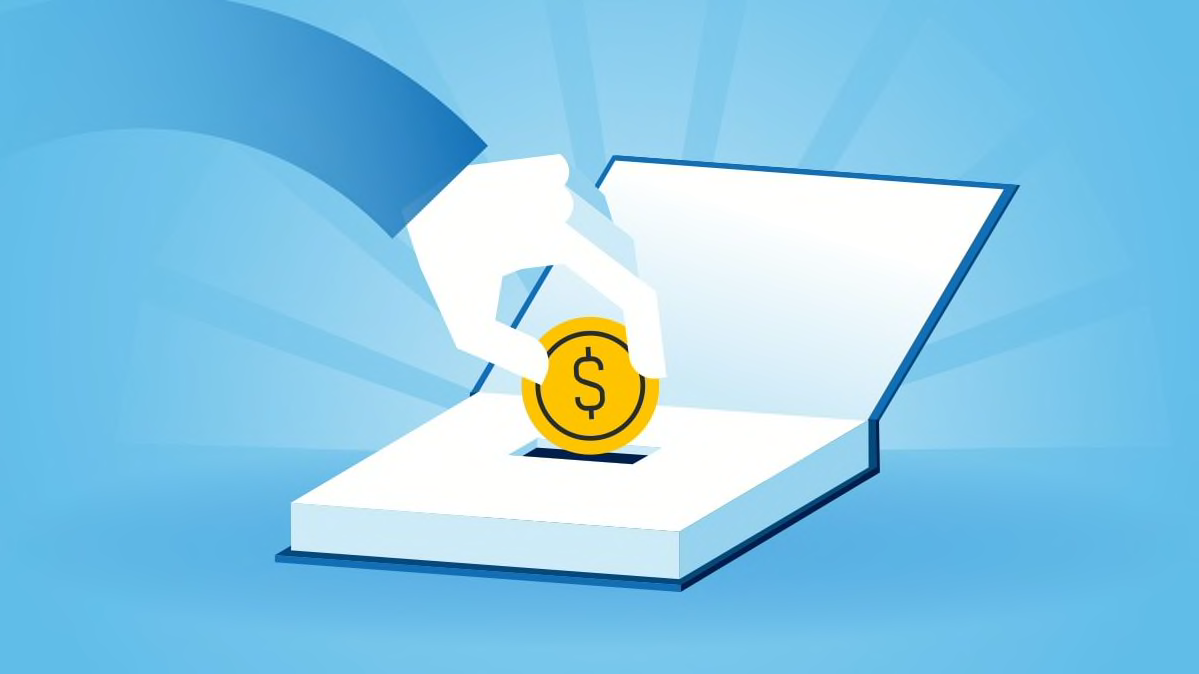
If you're graduating from college this spring, congratulations. Now brace yourself. Nearly two out of three grads are leaving school with student loans. If you're one of them, you need to choose the right repayment plan for paying off your debt.
You have at least eight options, depending on the type of student loan you carry. The recent average loan balance for grads with bachelor's degrees has climbed to $30,000, so your choice can have a big impact on your ability to keep up with payments and the total amount you pay back.
"It can be really overwhelming for borrowers, especially for someone just out of school," says Betsy Mayotte, president of The Institute of Student Loan Advisors, a nonprofit that provides free one-on-one counseling for student borrowers.
It's tempting to simply opt for the plan that gives you the lowest monthly payment. But that may not be the best choice for the long term because you'll end up paying more in interest on your loan.
Instead, look for the plan that lets you pay the lowest total amount based on monthly payments you can afford. Be realistic about what you can handle now so you won't fall behind. You can always step up payments later. "The path to the right plan is different for everybody," Mayotte says.
Now is a good time to start weighing your options. If you have federal loans and you will no longer be in college full time, the first payment is due six months after you leave school. That means if you graduate in May, the initial payment is due in November.
If you don't do anything, you'll automatically be put into the standard repayment plan, where you make equal monthly payments, including interest, over 10 years, adding up to 120 payments.
If you want another payment option—perhaps one that's based on your income—you should apply 45 to 60 days before the first bill is due. That's September for recent grads.
You can switch plans anytime, and you should re-evaluate your payment options periodically. Mayotte recommends doing that every two years or when you have a major life event, such as starting a new job, being laid off, or getting married.
How to Pick the Best Plan for You
Depending on your financial situation, one of these loan repayment plans may be right for you.
If You Want to Pay the Lowest Total Amount
Because loan interest racks up daily, it's almost always a smart move to pay more than the minimum required if you can afford it. There's no penalty for paying student loans off early, no matter which plan you are in.
Say you have the average loan balance of $30,000 and pay $330 monthly. You'll rack up $10,300 in interest over 10 years in the standard repayment plan, assuming a 6 percent rate, or $40,300 total. If you pay $100 extra every month, you can retire the loan in 7 years. That cuts your interest to $7,000 and lowers your total loan repayment to about $37,000. Use a calculator such as this one from FinAid.org to see how much you can save by putting extra toward your loans each month.
If You Can't Afford the Standard Payment
If you're just starting out and not making much money, you may be eligible for an income-based repayment plan. There are several types to consider. Depending on your financial situation and other factors, such as when you took out the loan, you may pay as little as 10 percent of your discretionary income toward your loan.
If you're worried about falling behind on your payments, getting into an income-based program can help you stay on track, says Persis Yu, director of the National Consumer Law Center's Student Loan Borrower Assistance Project. But don't leave your payments on autopilot. Pay extra when you can, and step up your payments as your income grows.
If you do pay more than the minimum, request that your loan servicer use the extra to pay down the principal on your highest-rate loan. People who overpay often find that the loan servicer applies the extra money to interest on the next payment or spreads it over several loans, says Suzanne Martindale, senior policy counsel and education debt expert at Consumer Reports.
Use this sample letter from the Consumer Financial Protection Bureau to instruct the loan servicer on what to do with the overpayment, and ask for confirmation that the payment was directed where you want it to go.
If You Think You'll Qualify for Loan Forgiveness
One exception to the rule of paying the most you can afford is when you're pursuing a loan forgiveness program. One of the biggest programs is the federal Public Service Loan Forgiveness (PSLF) program. Under PSLF, the balance of your federal loans may be erased if you meet certain requirements, which include making 120 on-time payments in full while working at a nonprofit or in the public service field.
These programs can really pay off. Say you have $37,000 in loans and earn $50,000 a year (that's about the average starting salaryfor new grads). If you pay 10 percent of your discretionary income toward your loans and make steady payments over 10 years, you'll end up paying $31,000 in total, less than you borrowed in the first place. Other federal and state-based loan forgiveness programs, which also are typically for public sectors jobs, can erase a big chunk of your debt in a shorter time period.
Still, counting on public service forgiveness is tricky. It's hard to know where your career will take you, and the programs have very specific requirements, including being in the right type of income-based loan repayment plan, working for an eligible employer, and providing documentation. Many borrowers have been tripped up by the fine print. Before pursuing this option, read this Consumer Reports piece on what you should know about public service loan forgiveness.
If You Have Parent PLUS Loans
If you took out a Parent PLUS loan to help a child pay for school, you have limited options. With most PLUS loans, repayment must begin 60 days after the money is disbursed, though some allow you to hold off until the student is out of school. If you can't afford the payment, you may be able to lower the monthly amount by extending the payment period, but that will increase the total amount you owe.
A parent who works in a public service or nonprofit career may also qualify for a loan forgiveness program. But you will need to consolidate your loans and get into an income-based repayment plan before payments start counting toward forgiveness eligibility.
If You Have Private Loans
When you take out private loans, you have far fewer repayment options. Most lenders allow you to defer payment until you leave school, though interest starts accumulating immediately after the loan is disbursed. Unless you default on the loan, regulations that govern private lending prevent banks from altering payment terms, Mayotte says.
Unlike federal student loan rates, which are fixed, most private student loans have variable rates. And if rates rise, you could end up owing more in interest over time.
Still, resist the temptation to refinance your federal loans into private ones just to get a lower interest rate, says Yu from the Student Loan Borrower Assistance Project. You'll lose important consumer protections, such as the ability to defer or stretch out payments if you have trouble paying or want to return to school.
Run Your Numbers
Once you zero in on an option, check to see whether it really works for your circumstances. You can use the Department of Education's repayment estimator to see what you'll owe in total based on the student loan repayment plan you choose. Also check Consumer Reports' interactive tool, which shows you how different payments options affect the amount you owe.
Want More Advice? Watch This Video
Paying for college isn't easy. Consumer Reports' financial expert, Donna Rosato, gives Jack Rico, host of the TV show "Consumer 101," tips on how to maximize aid when paying for higher education.




















